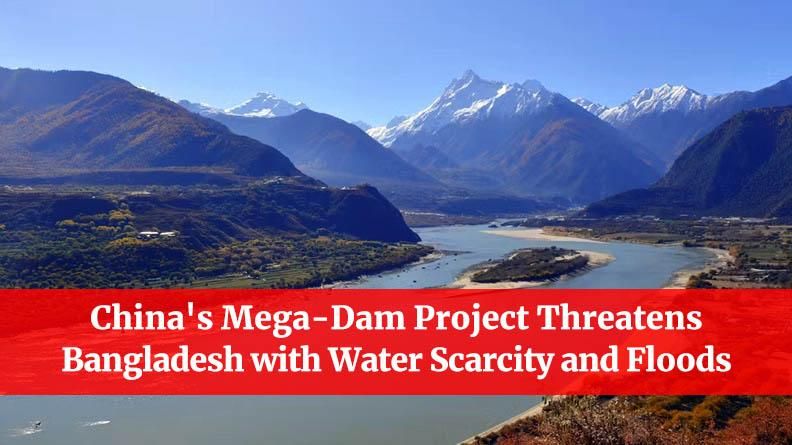China's recent approval for the world's largest hydropower dam on the Yarlung Tsangpo River in Tibet has sparked serious concerns in Bangladesh, located downstream. While the dam promises to be a monumental feat of engineering, it poses a significant threat to the water security, ecology, and livelihoods of millions in Bangladesh, where the river is known as the Jamuna.
The Yarlung Tsangpo, which becomes the Brahmaputra in India before entering Bangladesh, is a lifeline for over 160 million Bangladeshis. The dam's construction could drastically alter the river's flow patterns, potentially leading to reduced water availability during the dry season and increased flooding during the monsoons. A report by the Bangladesh Ministry of Environment, Forest and Climate Change estimates that even a 5% reduction in the Brahmaputra's flow could cause a 15% drop in agricultural output in some regions. This could severely impact Bangladesh's economy, exacerbate food insecurity, and potentially lead to increased migration.
The dam could also block the crucial flow of sediment, which naturally fertilizes agricultural lands in Bangladesh. This reduction in soil fertility would further threaten the country's agricultural sector. Additionally, the disruption of migratory patterns of fish due to the dam could negatively impact the livelihoods of approximately two million fishermen in both India and Bangladesh.
The Yarlung Tsangpo flows from Tibet, turns at the ‘Great Bend’ near the planned dam site, and becomes the Brahmaputra in India and Bangladesh. — Mehebub Sahana
The lack of a water-sharing treaty between China, India, and Bangladesh exacerbates the situation. China's unilateral decision to proceed with the dam project without consulting downstream nations has raised geopolitical tensions and concerns about water rights and ownership. The potential for China to control the timing and volume of water flow raises fears of it being used as a "water bomb," especially during times of drought or low flow.
Bangladesh, already highly vulnerable to flooding due to its geography, faces an increased risk of extreme flood events. Climate change is further compounding this problem, with increasing frequency of extreme precipitation and erratic rainfall. The potential disruption of water flow from the dam, coupled with these climate change effects, creates a dire situation for Bangladesh.








.svg)


